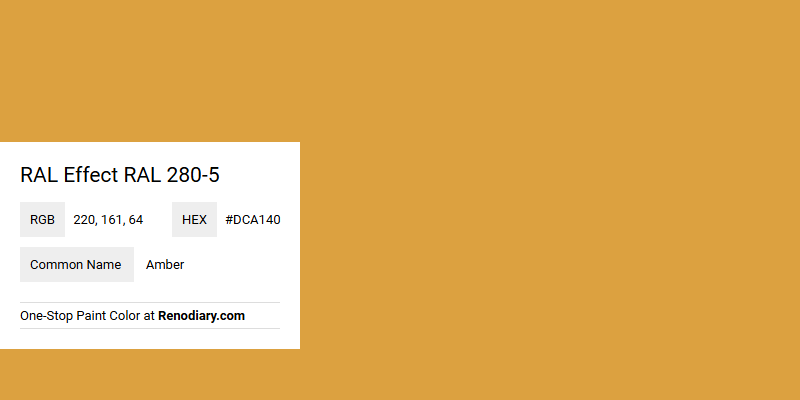
Amber, characterized by its warm and vibrant tone, is represented by the RAL Effect 280-5 with an RGB composition of 220, 161, and 64. This rich hue evokes feelings of warmth and comfort, making it a popular choice for designs aiming to convey elegance and sophistication. As a versatile color, amber finds its place both in classic and contemporary palettes, enhancing aesthetic appeal across various applications.
RAL 280-5 Color Details
Color Description
RAL Effect RAL 280-5 is a warm and earthy shade of brown. It is often described as a brown color rather than the initially mentioned red or yellow, which seems to be a misinterpretation. The color has a hue of 43 degrees and a saturation of 67%.
Undertones
The undertone of RAL 280-5 can be accurately described as having a red hue, although the primary color impression is brown. This red undertone is determined by isolating the pure hue and eliminating any tints, tones, and shades.
Color Values
- HEX value: #DCA140
- RGB code: 220, 161, 64
- LRV (Light Reflectance Value): 42.64
Usage
- Living room walls with white furniture and green plants for a relaxing and inviting space.
- Kitchen cabinets with stainless steel appliances and white countertops for a modern and sophisticated look.
- Bedroom bedding with beige curtains and purple accents for a warm and romantic mood.
- Bathroom tiles with white fixtures and blue accessories for a clean and fresh look.
- Garden pots with wooden benches and colorful flowers for a rustic and charming appeal.
Atmosphere
- Relaxing and inviting in a living room.
- Modern and sophisticated in a kitchen.
- Warm and romantic in a bedroom.
- Clean and fresh in a bathroom.
- Rustic and charming in a garden setting.
RAL Effect RAL 280-5 Color Alternative
When considering a color alternative for RAL Effect RAL 280-5, Little Greene Yellow-Pink 46 offers a vibrant yet subtle option that captures attention while remaining versatile for design projects. Sherwin Williams Sunflower SW 6678 provides a warm, inviting hue that complements both contemporary and classic aesthetics with its dynamic undertone. Meanwhile, Sherwin Williams Gambol Gold SW 6690 brings a touch of earthiness and sophistication, allowing designers to explore a rich palette that enhances creative expression.
Bathroom
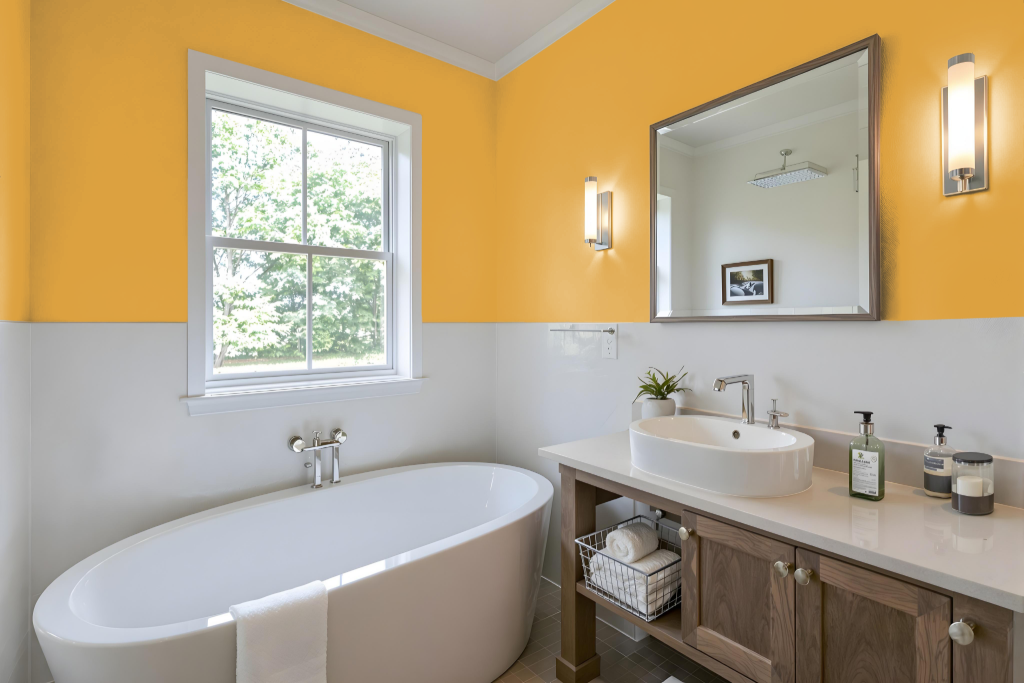
In bathrooms, RAL 280-5 creates a clean and fresh atmosphere that complements a space with its crisp appearance. It harmonizes beautifully with white fixtures, contributing to a modern, sophisticated aesthetic.
Pairing this color with white surfaces and blue accents—such as through towels, shower curtains, or decorative details—results in a cohesive and inviting design. The coordinated use of these elements elevates the overall look, ensuring a stylish and contemporary bathroom environment.
Bedroom
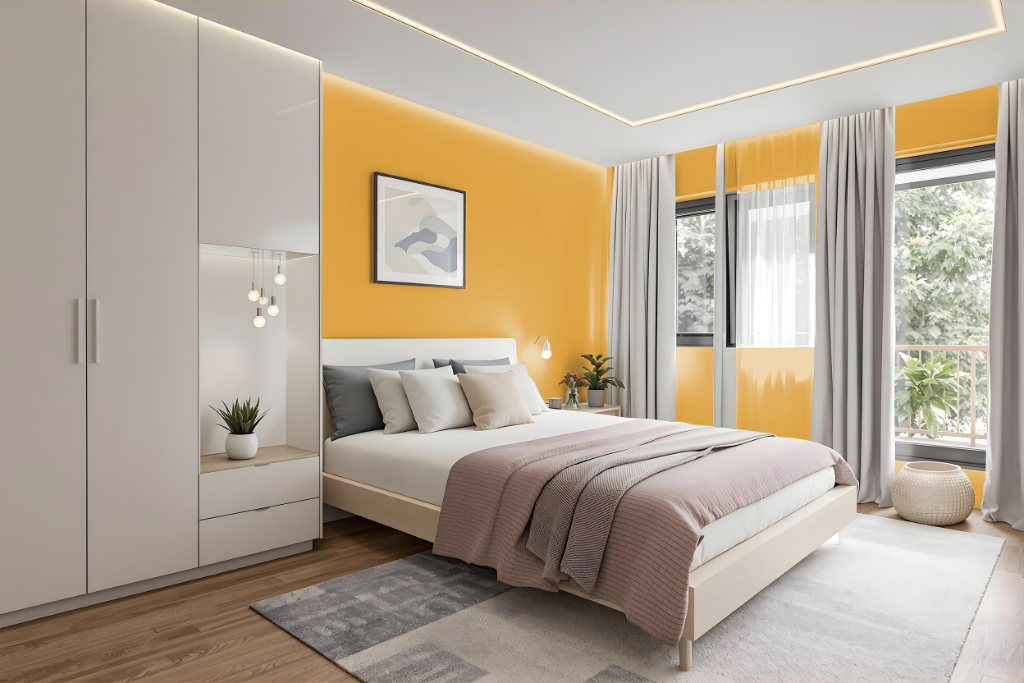
In a bedroom color scheme, RAL Effect RAL 280-5 adds a warm, energetic touch that can be featured on a standout accent wall or integrated into key furniture pieces like dressers and nightstands. Harmonizing this lively hue with neutral tones such as soft grays, whites, or creams creates a balanced and inviting atmosphere while natural textures like wood and foliage enhance the room's cozy appeal.
For a dramatic statement, combining this dynamic color with deeper tones such as navy or emerald introduces striking contrasts that elevate the design. The thoughtful interplay of bold vibrancy with serene subtlety results in a bedroom space that is both visually engaging and comfortable.
Kitchen
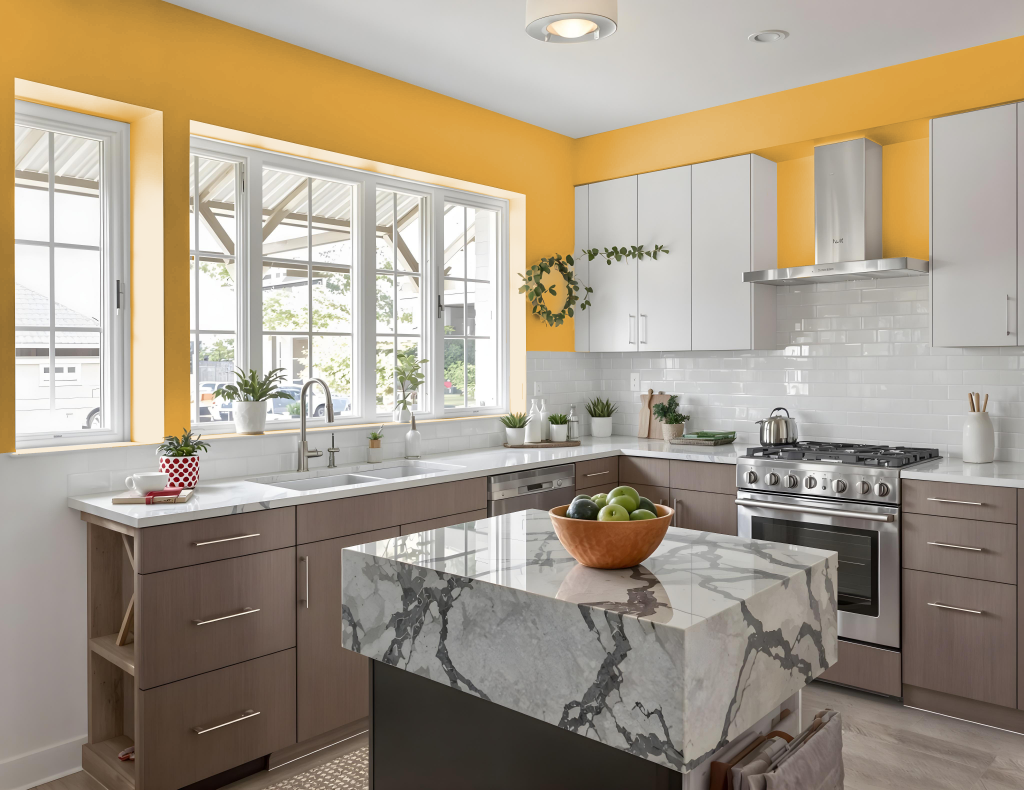
For a kitchen color scheme, RAL Effect RAL 280-5 offers an inviting choice for cabinets that seamlessly integrates with stainless steel appliances and white countertops, creating a cohesive and modern atmosphere. Its warm tone sets a distinct character ideal for accent walls or the backdrop of kitchen islands.
Incorporating this hue alongside neutral flooring and light surfaces supports a clean, balanced design, while pairing it with white fixtures and blue accessories further enhances the overall aesthetic appeal of the space.
Living Room
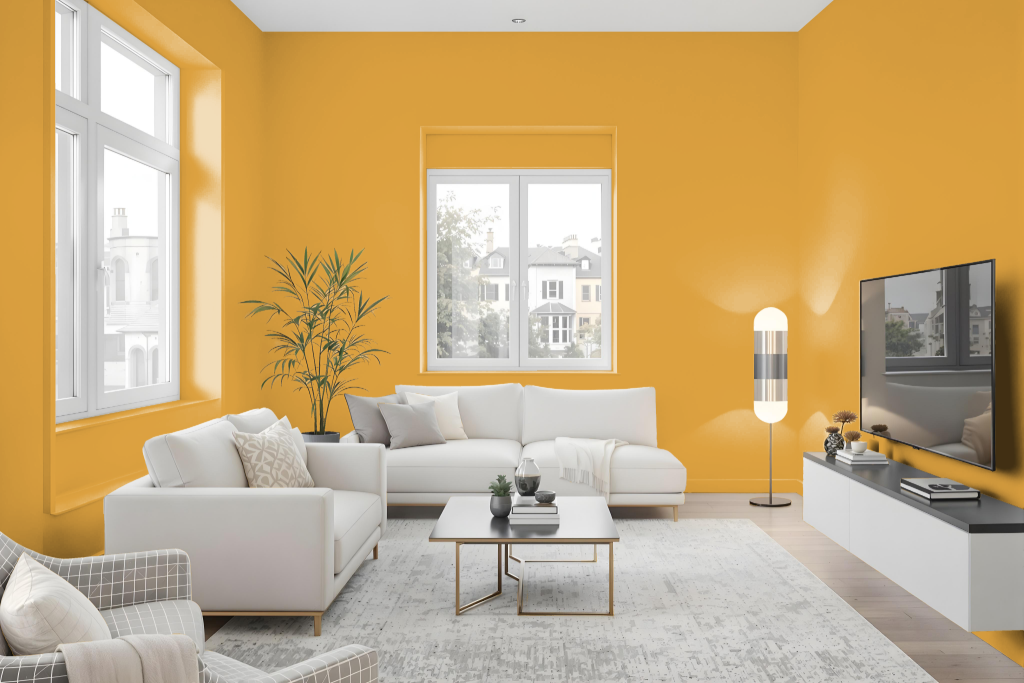
In a living room, RAL 280-5 on the walls paired with white furniture and green plants brings a relaxed and inviting energy. The color creates a harmonious backdrop that enhances the overall ambiance and sets a calm tone for the space.
Beyond the living room, this shade works well in kitchens where it enriches cabinetry alongside stainless steel elements and light countertops for a modern feel. It also adapts to bedrooms when used in bedding with complementary beige curtains and purple touches to evoke warmth, as well as bathrooms where it appears in tile accents paired with white fixtures and blue accessories to maintain a clean and fresh aesthetic.
Outdoor
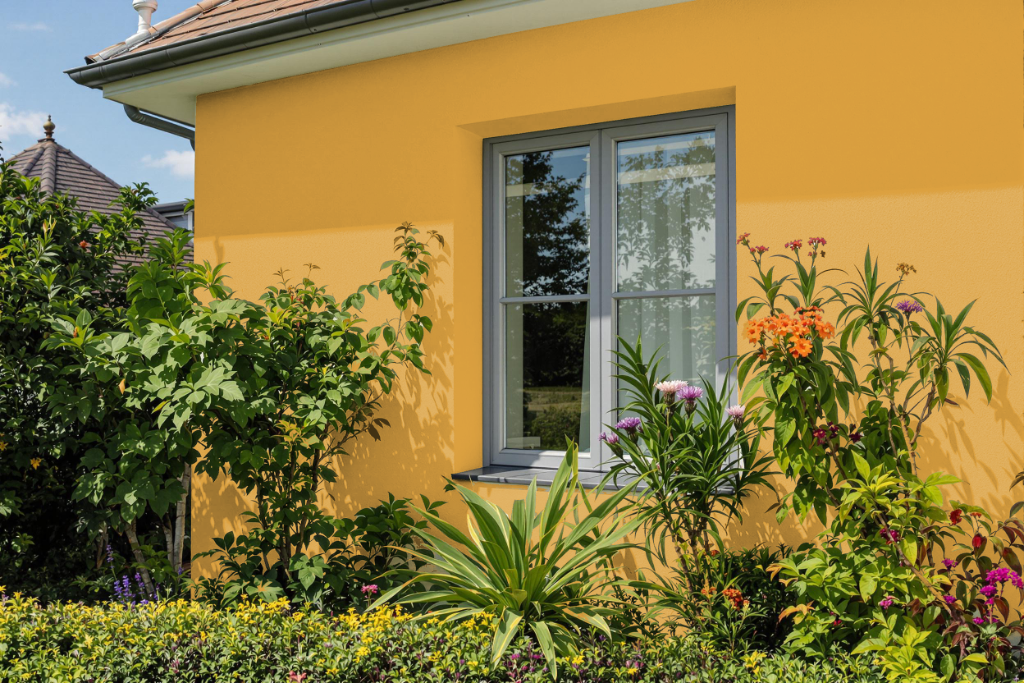
For home outdoor color, RAL Effect RAL 280-5 offers a robust and vibrant appearance ideal for exterior home painting. With a moderate light reflectance that balances visibility and aesthetic appeal, this color works well on walls, trims, and accents to create a cohesive design for building exteriors.
While the digital depiction may slightly differ from the real-life appearance, verifying the shade with a physical RAL color fan is recommended to ensure an accurate decision for your project.
